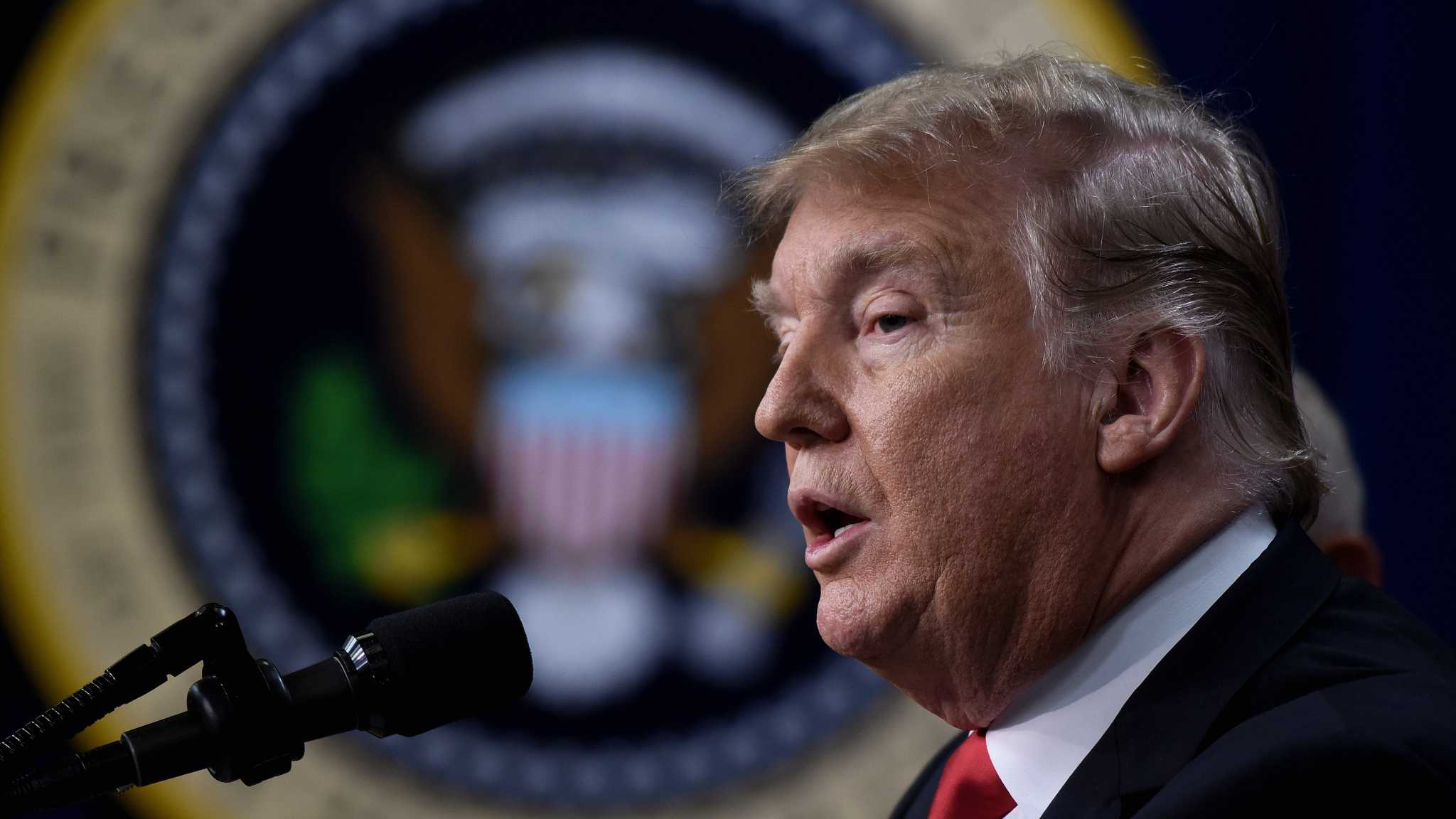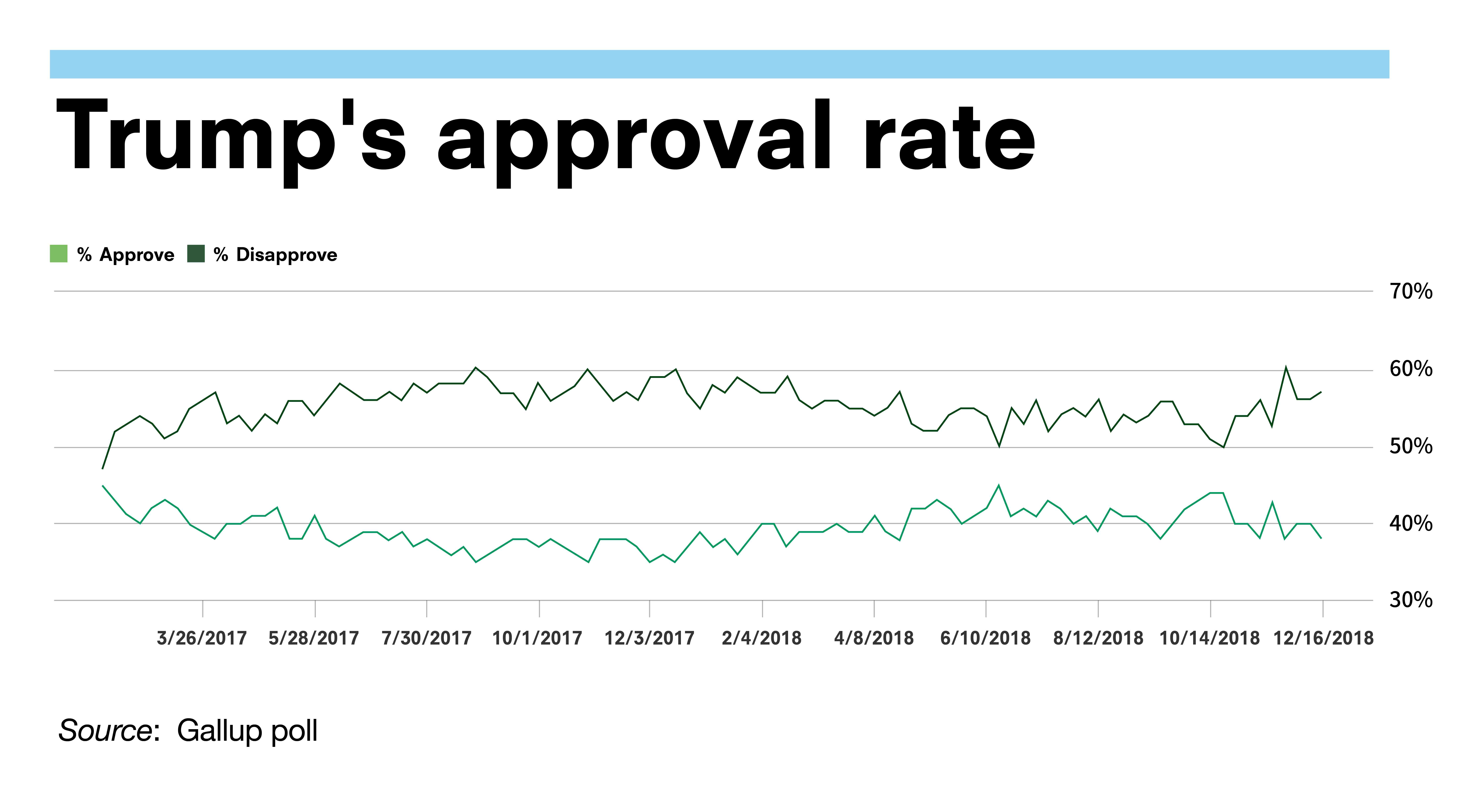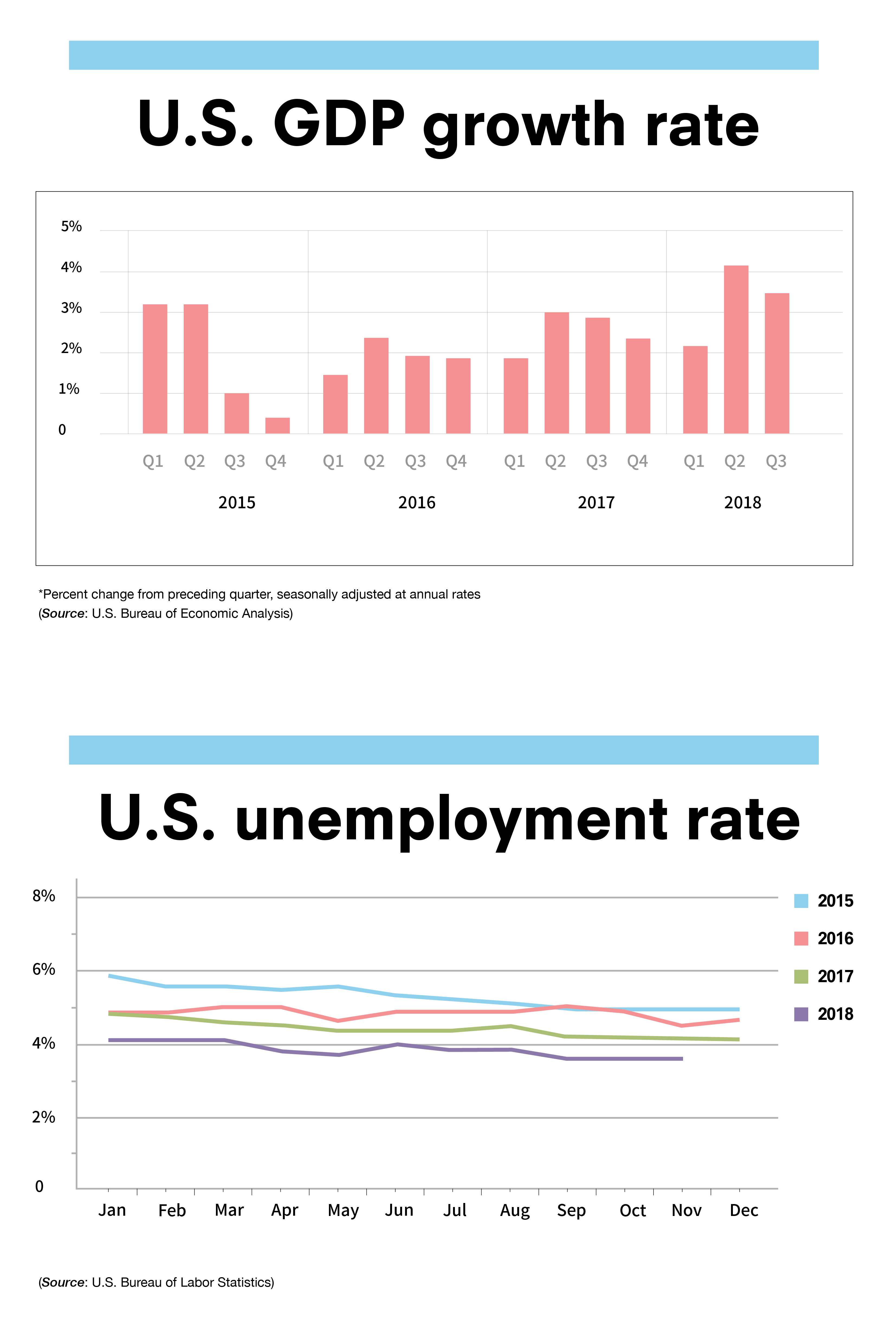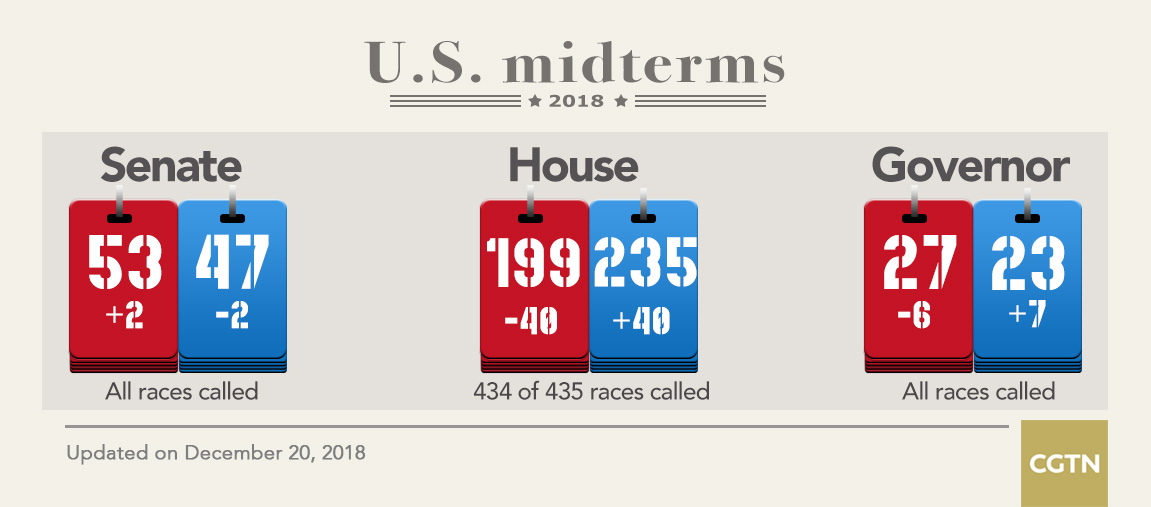
Politics
10:40, 22-Dec-2018
Graphics: How did Trump perform in 2018?
Updated
10:10, 25-Dec-2018
By Le Tian, Zhao Hong

U.S. President Donald Trump is about to end his second year in office. The graphics below offer a glimpse into Trump's performance in the areas of the economy and domestic and international policies.
Trump's approval rate flat
Trump's approval rate reached 45 percent, the highest during his tenure, soon after he was inaugurated on Jan. 20 2017, and declined slowly to 35 percent by late 2017. In 2018, his approval rate picked up to 40 percent and managing to hover a little over that.

U.S. economy hits target
The GDP of the U.S. grew at an annual rate of 3.5 percent in the third quarter of 2018, according to the U.S. Bureau of Economic Analysis. In the second quarter, GDP increased 4.2 percent. The GDP growth, fueled by tax cuts and increased government spending, has exceeded the Trump administration's three-percent annual growth target. But some analysts say the growth will likely fade away in 2019 over rising interest rates and Trump's trade war.
The unemployment rate was 4.8 percent when Trump was sworn in, and fell to 3.7 percent in September this year. The last time it was that low was in October 1969, nearly half a century earlier. Many economists see today's low unemployment rate as a continuation of the trend that began under former President Barack Obama, although they believe the GOP tax cuts played a role in keeping job gains strong this late in an economic expansion.

White House turnover at record high
The Trump team saw more first-year departures, including resignations and dismissals than any other president in at least 40 years – and the circle keeps getting smaller.
NPR reported that 43 percent of top-level White House positions have seen staff turnover under Trump, who has had more fluctuation among senior aides than "his four most recent predecessors had after two years."
The revolving door of Trump's highest cabinet officials is not usual, although some departures could be expected
Rex Tillerson, Gary Cohn, Nikki Haley, Hope Hicks, and John Kelly are only a few of the people who departed in 2018.
Here is a rundown of other high-ranking officials who have announced their resignation and departure, starting with the most recent.

Mueller probe: No end in sight
As 2018 winds down, Special Counsel Robert Mueller, who heads the probe into alleged improper links between Trump, his 2016 election campaign and the Kremlin, is gearing up for big revelations.
"Phony Russia Witch Hunt" and "conflicted prosecutor gone rogue" are just two snippets from the president's recent torrent of anti-Mueller tweets.
The investigation has already brought dozens of criminal charges against more than 30 defendants, including four Trump associates.
Here are some key developments in the investigations.
January 10, 2018 - Bannon agrees to Mueller probe interview avoiding grand jury
January 23, 2018 - The Washington Post reports Attorney General Jeff Sessions was questioned by Mueller's team on January 17.
January 25, 2018 - The New York Times reports that Trump had ordered Mueller's firing seven months before, but was refused. Trump refers to the report as "fake news."
February 20, 2018 - Alex van der Zwaan, a Dutch lawyer, pleads guilty to lying to Mueller's investigators.
July 13, 2018 - The Justice Department announces indictments against 12 members of the Russian intelligence agency.
September 14, 2018 - Manafort agrees to cooperate with Mueller's team and pleads guilty to conspiracy charges in lieu of going on trial a second time.
September 17, 2018 - Trump orders the declassification of various documents and text messages related to the Russia investigation.
November 20, 2018 - Trump submits written answers to Mueller over Russia probe
November 26, 2018 - In a court filing, prosecutors allege that Manafort violated his plea agreement and committed further crimes by lying to the FBI.
November 29, 2018 - Cohen pleads guilty to lying to Congress and signs an agreement to cooperate with Mueller's team.
December 12, 2017 - Cohen sentenced to three years in prison
Immigration crackdown: Troops and walls
The immigration debate continued to rage in the U.S. in 2018 because of Trump's zero-tolerance policies, tough stance on migrants, and his aim of deporting approximately 11 million illegal immigrants from the country.
As a result, it's estimated that only 20,000 refugees would have entered America by the end of the year. That's the lowest figure since the resettlement program was created after the Refugee Act of 1980.
Although the "border wall" with Mexico has yet to find funding, Trump on October 31 sent 5,800 troops to the Mexico border and promised to send as many as 15,000 troops to the border.
On November 25, the United States closed the border to Mexico. Customs agents fired tear gas at members of the caravan who came too close of the border fence.

Central American migrants run along the Tijuana River Baja California State, Mexico, near U.S.-Mexico border, after the U.S. border patrol threw tear gas, November 25, 2018. /VCG Photo
Central American migrants run along the Tijuana River Baja California State, Mexico, near U.S.-Mexico border, after the U.S. border patrol threw tear gas, November 25, 2018. /VCG Photo
Trump proposed a replacement plan to Obama's Deferred Action for Childhood Arrivals (DACA) program on January 26.
However Congress did not buy into his offer and on November 8, the U.S. appeals court ruled against Trump, which means the president cannot immediately end DACA.
A week before midterm election, Trump also hinted he would seek to scrap the right of citizenship for U.S.-born children of non-citizens.
Midterm elections: First major test for Trump
The Republicans went into November's midterm elections with a positive national message to tell on the economy, yet Trump put himself – and immigration – front and center of the campaign.

The Democrats focused on health care and won overwhelmingly in the national vote, securing an advantage of more than eight points in combined voting for the House of Representatives and flipping the chamber in the process. The 40-seat Democratic majority in the lower house will spell major problems for Trump over the next two years, with a slew of investigations into the president and his affairs expected.
Republican gains in the Senate were pared to just two, despite the party attacking three times more seats than they defended. Increasing the majority to 53-47 could nevertheless prove pivotal, with a slew of confirmation hearings for Trump appointees likely.
(Graphics by Jia Jieqiong, Hu Cong)

SITEMAP
Copyright © 2018 CGTN. Beijing ICP prepared NO.16065310-3
Copyright © 2018 CGTN. Beijing ICP prepared NO.16065310-3